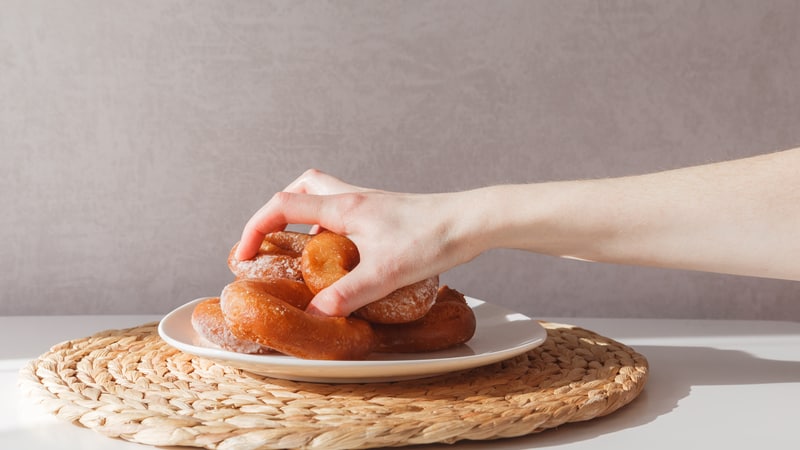Health: 6 Ways to Fight a Sugar Binge
When the sugar is addictive and the guard is down...

You didn’t just eat one piece of candy, you ate all the candy (or at least that’s what it felt like). You know it’s not the best move for your body—but now that it’s done, is there anything you can do to counteract its effects?
While you can’t erase those calories, there are ways you can keep them from being immediately stored as fat (and minimize the accompanying sugar crash and cravings, too), says Laila Tabatabai, M.D., an endocrinologist at Houston Methodist Hospital. Here are tips for what to do next.
1. Get some exercise.
It can take a lot of physical activity to burn off one moment of weakness. You’d have to run almost 5 miles to cancel out the calories of certain kinds of doughnuts, for example. But even if you can’t entirely negate your dietary indiscretions, a little extra cardio is still better than nothing.
“What’s even more important than burning off those calories is that exercise can reduce your appetite and reduce your cravings for additional sugar,” says Tabatabai. She recommends going for a quick walk, adding an extra 15 minutes to your regular afternoon workout or taking the stairs instead of the elevator at lunchtime.
2. Cut carbs at your next meal.
If your sugar binge happens before lunch or dinner, Tabatabai recommends eliminating bread and simple carbohydrates at your next meal. “If you’ve already had something sweet and sugary, stick with salad and lean protein,” she says. “You don’t need the additional potato or pasta carbs piled on top.”
This strategy not only helps keep your overall daily calories in check, it can also help keep your blood sugar levels stable so you’ll stay energized throughout the day.
3. Drink a glass (or two) of water.
You may be tempted to guzzle coffee once you start to feel the effects of a sugar crash, but the buzz you get from caffeine will be short-lived. Instead, stay hydrated by drinking plenty of good old H2O, Tabatabai says.
“Drinking extra water can actually help flush out some of the extra sugar you’ve eaten,” she says.
4. Have a high-protein snack.
No matter how many calories you ingest during a junk-food binge, chances are you’ll feel hungry again about two hours later, thanks to your rapidly declining blood sugar levels, says Tabatabai. If you’re not close to a mealtime, satisfy your appetite with a 100- to 200-calorie high-protein snack.
“Have an apple with peanut butter, a hard-boiled egg, some Greek yogurt—something that’s low in simple sugars that will help you feel full until your next meal,” she says.
5. Stay on your feet.
Resist the urge to slump in your chair all afternoon; instead, try to spend as much time as possible standing up. Standing may help you feel more energized and will automatically burn more calories than sitting.
6. Don’t fall off the wagon.
The most important thing, Tabatabai says, is to remember that your slip-up is not an excuse to forget all about your healthy eating goals. “A lot of people think ‘Oh well, there goes my diet; might as well make this a cheat day,’ but you can still cut it off at any point and prevent yourself from eating more,” she says.
For more wellness tips, visit our health page!
Health delivers relevant information in clear, jargon-free language that puts health into context in peoples’ lives. Online at www.health.com.
© 2020 EATING WELL, INC. DISTRIBUTED BY TRIBUNE CONTENT AGENCY, LLC

